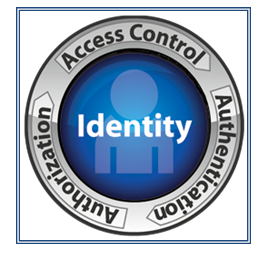Cloud Computing has completely changed the way Identity and Access Management (IAM) is performed in organizations who operate on the cloud. A few years ago, the typical scenario would have been the IT department giving remote access to specific people and only for a few applications. This has changed now, with the employees accessing company resources from their personal devices over unsecure networks.
In order to protect their assets, the security measures should include encryption, logging and monitoring, role-based access control and more. The Cloud SaaS, PaaS and IaaS services offered by Azure and Amazon Web Services, has mandated that the organizations integrate the IAM practices, processes and procedures in a scalable, effective and efficient manner.
Challenges faced by IAM
New cloud-based identity and access management (IAM) services are growing in popularity as more organizations are opting for them to provide a unified and simple identity management. They may add extra security and protection to your company resources. But, it poses key challenges like proper assessment of the existing IT infrastructure, current IAM standards and security before opting for the cloud based IAM services.
The question which most of the organizations now ask, is how to extend their existing IAM systems to manage users and their access to cloud-based applications and services. Also, how to leverage the various cloud services, at a reasonable cost without losing control of the security.
The major challenges faced by the IAM in the cloud:
1. Identity Provisioning / De-provisioning
This concerns with providing a secure and timely management of on-boarding (provisioning) and off-boarding (de-provisioning) of users in the cloud.
When a user has successfully authenticated to the cloud, a portion of the system resources in terms of CPU cycles, memory, storage and network bandwidth is allocated. Depending on the capacity identified for the system, these resources are made available on the system even if no users have been logged on.
Depending on the number of users, the system resources are allocated as and when required, and scaled down regularly, based on projected capacity requirements. Simultaneously, adequate measures need to be in place to ensure that as usage of the cloud drops, system resources are made available for other objectives; else they will remain unused and constitute a dead investment.
2. Maintaining a single ID across multiple platforms and organizations
It is tough for the organizations to keep track of the various logins and ID that the employees maintain throughout their tenure. The centralised federated identity management (FIdM) is the answer for this issue. Here users of cloud services are authenticated using a company chosen identity provider (IdP).
By enabling a single sign on facility, the organization can extend IAM processes and practices to the cloud and implement a standardized federation model to support single sign-on to cloud services.
3. Compliance Visibility: Who has access to what
When it comes to cloud services, it’s important to know who has access to applications and data, where they are accessing it, and what they are doing with it. Your IAM should be able to provide a centralised compliance reports across access rights, provisioning/de-provisioning, and end-user and administrator activity. There should be a central visibility and control across all your systems for auditing purposes.
4. Security when using 3rd party or vendor network
A lot of services and applications used in the cloud are from 3rd party or vendor networks. You may have secured your network, but can’t guarantee that their security is adequate.
If you are facing any of these challenges, then Sysfore can help you to establish a secure and integrated IAM practices, processes and procedures in a scalable, effective and efficient manner for your organization.
You can contact Sysfore at info@sysfore.com or call us at +91-80-4110-5555.

